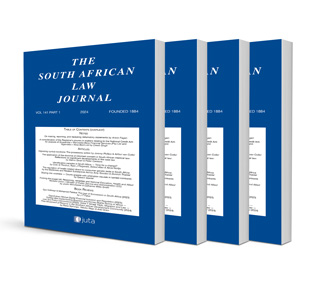The importance of a legislative framework for co-operation and collaboration in the Twin Peaks model of financial regulation

The importance of a legislative framework for co-operation and collaboration in the Twin Peaks model of financial regulation
Author G van Niekerk & C van Heerden
ISSN: 1996-2177
Affiliations: University of Cape Town
Source: South African Law Journal, Volume 137 Issue 1, p. 108-144
Abstract
The enactment of the Financial Sector Regulation Act 9 of 2017 (‘the FSR Act’) on 21 August 2017 marks the first stage of South Africa’s transition from a sectoral to a Twin Peaks model of financial regulation. On 1 April 2018 — the commencement date of the FSR Act — two regulators, the Prudential Authority and the Financial Sector Conduct Authority, were established. This article considers the mechanisms introduced by the FSR Act to facilitate co-operation and collaboration between the South African Reserve Bank (‘SARB’) and the financial sector regulators, and other organs of state as well, by comparing these measures to those available in Australia. The co-operation and collaboration in South Africa are discussed on two levels namely, first, the focused co-operation and collaboration enabling the SARB to fulfil its financial stability mandate and, secondly, the broader co-operation and collaboration for the effective operation of the Twin Peaks model. This is compared to the co-operation and collaboration in Australia between the Reserve Bank of Australia and the other two regulatory agencies, APRA and ASIC. It appears that immutable aspects of co-operation and co-ordination should preferably be captured in legislation, especially aspects such as conflict resolution and lines of co-operation and collaboration in crisis times.